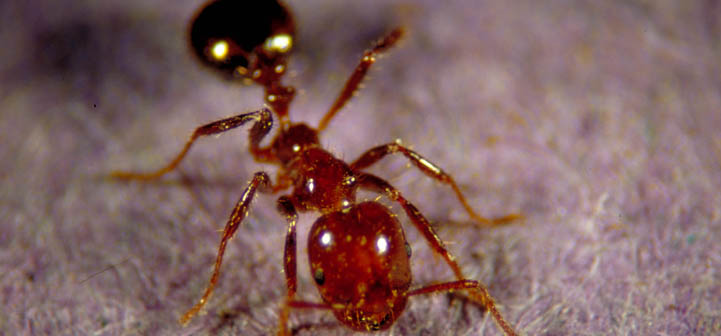FA Youth Home > Lessons: Living It Up in a Fire Ant Nest > Colony Location
Fire Ant Colony Location
Fire ants prefer to live in open, sunny areas. By building a mound in an open, sunny spot and then digging tunnels, the mound absorbs the sun’s heat which is distributed to the entire colony. By warming the entire colony, the sun’s heat allows the developing ants to grow. Fire ants are so good at regulating the temperature of the mound that they are able to keep their eggs, larvae and pupae at about 78 degrees Fahrenheit, the preferred temperature range.
Fire ants do not like shade. Rarely will they build mounds under trees or in a wooded area unless there is plenty of sunlight on the ground for several hours daily. When it’s a really hot day, the fire ants move into tunnels farther down in the mound. Their tunnels are so vast that they have been known to build exit tunnels or foraging tunnels as far as 100 feet away from the colony.
Fire ants also prefer soils such as clay or loam that “stick together” for building the raised mounds in which they live.
Fire ants dislike being flooded. If a mound is flooded during a rainstorm or other high-water situation, all the ants will cling together and form a living raft to protect the queen (or queens) and the developing offspring. Once this raft of ants hits a tree, rock or other dry object, all of the ants will climb onto it and wait for the water to go down.
After rains, fire ant mounds seem to magically appear in sunny areas. The ant colonies build a taller mound on drier soil and live above the ground.
Fire ants may be more active on warm, cloudy days than hot, clear days. The ideal temperatures for fire ant activity ranges from 70 °F to 95 °F. If the surface temperature of the soil is more than 95 °F, the ants will remain in the ground until temperatures are cooler. During the summer, fire ants may not come out during the day, but will forage for food at night.
